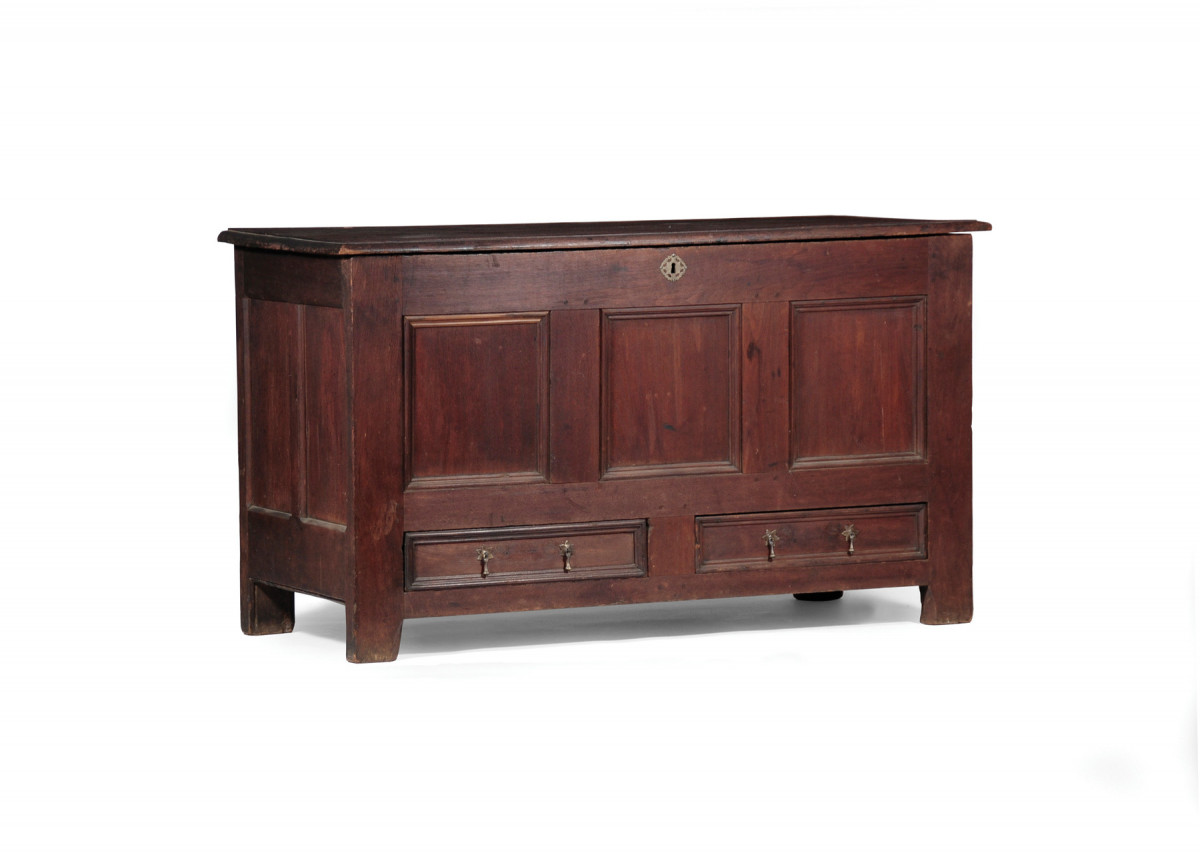We may receive a commission when you use our affiliate links. However, this does not impact our recommendations.

Fine form. Even though this chest was built with fairly straight-grained, “boring” wood, the overall form is to my eye elegantly proportioned and well executed. That makes it far more appealing than a piece with overused wildly figured grain or a poorly proportioned design.
Proportion and structure outweigh ornament and showy materials.
Have you ever found such a stunning piece of wood that you were almost afraid to cut into it? You know the boards I’m talking about. The tiger maple with such unbelievable striping you just want to put a frame around it and hang it on the wall. Or the curly cherry with the surface that looks so deep you could drown in it. It’s not too common to luck into boards like these, so when we do, our first instinct is often to try to showcase that unbelievable figure on every surface of a project that we can. That approach, however, frequently leads to less-than-stellar results that can range in appearance from “meh” to “blech.”
Similar results can occur from the overuse of other decorative elements such as mouldings, carvings, inlay, decorative painting or contrasting wood species. Any element whose main purpose is to highlight can also serve to detract if there’s too much of it, or if the underlying form is lacking.
We should also include exposed joinery in this discussion. Many woodworkers today are obsessed with showy joinery. Air-tight dovetails, pillowed through-mortise-and-tenon joints and ebony pegs, when used with restraint, can indeed add an element of visual interest to a piece with strong underlying form.
If the overall proportions and basic structure of a piece of furniture are lacking, however, it really doesn’t matter how perfect your hand-cut dovetails or keyed tenons are. Flawless skin cannot make up for poor bone structure.
If, on the other hand, the underlying form is good, you can get away with a less-than-perfect complexion. Just look at the furniture on display in most museums. It can be riddled with over-sawn dovetails, surface tear-out, inconsistent turnings and be made with straight-grained, figureless wood. But the piece can still be exemplary because its basic form is well executed, and its decorative elements serve to highlight the piece and draw your eye rather than clutter the look and create a chaotic appearance.
So what’s a woodworker to do? How do we use the wood in that wonderful board in a way that won’t result in utter disappointment? The answer is to start with the basic form then highlight it sparingly. Forget about the figure in the board; look past the surface. Instead, perfect the underlying skeleton before turning your focus to the skin.
Once the overall form and functionality of the piece are worked out, only then should the ornamentation – including the figure in the wood – be considered. Thinking about your designs in this way will increase the likelihood that the wood will enhance the overall appearance of your work rather than clutter it.
Here are some supplies and tools we find essential in our everyday work around the shop. We may receive a commission from sales referred by our links; however, we have carefully selected these products for their usefulness and quality.








